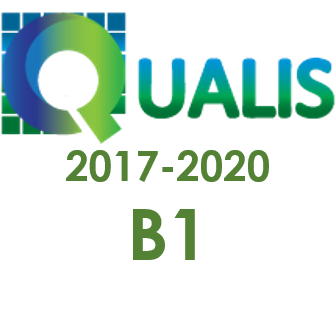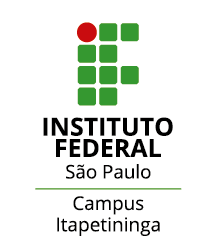the digital press as an resource for reflecting and learning on the methodological diversity in scentific practice
Keywords:
Enseñanza de las ciencias. Naturaleza de la ciencia. Noticias de ciencia. Práctica científica. Prensa digital.Abstract
One of the most characteristic features of scientific practice is the variety of methods that scientists use in their research. However, the distorted conception that a standard scientific method exists, which is applied by all scientists in their research, remains deeply rooted in society. This can be verified not only in textbooks and curricular prescriptions for school science, but also in the media. Consequently, in this paper it is proposed the critical and reflective reading of certain news from the digital press as a resource for learning about methodological diversity in scientific practice.
Downloads
References
ACEVEDO-DÍAZ, J. A.; GARCÍA-CARMONA, A. «Algo antiguo, algo nuevo, algo prestado». Tendencias sobre la naturaleza de la ciencia en la educación científica. Revista Eureka sobre Enseñanza y Divulgación de las Ciencias, Cádiz, v. 13, n. 1, p. 3-19, 2016.
ACEVEDO-DÍAZ, J. A.; GARCÍA-CARMONA, A. Controversias en la historia de la ciencia y cultura científica. Madrid: Los Libros de la Catarata, 2017.
BELL, R. Teaching the nature of science: Three critical questions. In Best Practices in Science Education. Carmel, CA: National Geographic School Publishing, 2009.
FLORES, J.; CABALLERO, M. C.; MOREIRA, M. A. El laboratorio en la enseñanza de las ciencias: Una visión integral en este complejo ambiente de aprendizaje. Revista de Investigación, Caracas, v. 33, n. 68, p. 75-111, 2009.
GARCÍA-CARMONA, A. Ciencia y pensamiento ilustrado. Red Científica: Ciencia, Tecnología y Pensamiento, Madrid, 2002. Recuperado de: https://www.researchgate.net/publication/260185138_Ciencia_y_pensamiento_ilustrado (última consulta: 4 de julio de 2020)
GARCÍA-CARMONA, A. Naturaleza de la ciencia en noticias científicas de la prensa: análisis del contenido y potencialidades didácticas. Enseñanza de las Ciencias, Barcelona, v. 32, n. 3, p. 493-509, 2014.
GARCÍA-CARMONA, A.; ACEVEDO-DÍAZ, J. A. The nature of scientific practice and science education. Science & Education, Dordrecht, v. 27, n. 5-6, p. 435-455, 2018.
HODSON, D. Laboratory work as scientific method: Three decades of confusion and distortion. Journal of Curriculum Studies, Oxford, v. 28, n. 2, p. 115-135, 1996.
HODSON, D. Towards scientific literacy: A teachers’ guide to the history, philosophy and sociology of science. Rotterdam: Sense Publishers, 2008.
HULL, L. W. H. History and philosophy of science. New York: Longmans, Green, 1959.
IBÁÑEZ, M.; ROMERO, M. D. C.; JIMÉNEZ, M. P. ¿ Qué ciencia se presenta en los libros de texto de Educación Secundaria? Enseñanza de las Ciencias, Barcelona, v. 37, n. 3, p. 49-71, 2019.
IRZIK, G.; NOLA, R. A family resemblance approach to the nature of science. Science & Education, Dordrecht,v. 20, n. 7-8, p. 591–607, 2011.
JARMAN, R.; MCCLUNE, B. Developing scientific literacy. Using the news media in the classroom. New York, NY: Open University Press, 2007.
LÓPEZ, M.; LUQUE, N.; MARTÍN, A. Medios de comunicación y COVID-19: Pautas para una información responsable. Escuela Andaluza de Salud Pública, Granada, España, 2020. Disponible en https://www.easp.es/web/coronavirusysaludpublica/medios-de-comunicacion-y-covid-19-pautas-para-una-informacion-responsable/ (última consulta: 25/06/2020)
MILLER, J. D. Public understanding of, and attitudes toward, scientific research: What we know and what we need to know. Public Understanding of Science, London, v. 13, n. 3, p. 273-294, 2004.
MINISTERIO DE EDUCACIÓN. Real Decreto 1105/2014, de 26 de diciembre, por el que se establece el currículo básico de la Educación Secundaria Obligatoria y del Bachillerato. Madrid: Boletín Oficial del Estado, 2015.
NATIONAL RESEARCH COUNCIL. A framework for K-12 science education: Practices, crosscutting concepts, and core ideas. Washington, DC: The National Academies Press, 2012.
OLIVERAS, B.; MÁRQUEZ, C.; SANMARTÍ, N. The use of newspaper articles as a tool to develop critical thinking in science classes. International Journal of Science Education, Oxford,v. 35,n. 6, p. 885-905, 2013.
ORGANIZATION FOR ECONOMIC CO-OPERATION AND DEVELOPMENT. PISA 2018 assessment and analytical framework. Paris: OECD Publishing, 2019.
PÍÑAR, I. Física y Química. 3º de Secundaria. Madrid: Oxford, 1998.
PUENTE, J.; VIGUERA, J. A.; GONZALO, P. Física y Química. Newton. 3º de Secundaria. Madrid: SM, 2002.
SHAMOS, M. H. The myth of scientific literacy. New Brunswick, NJ: Rutgers University Press, 1995.
SOBER, E. Is the scientific method a myth? Perspectives from the history and philosophy of science. METODE Science Studies Journal, Valencia, n. 5, p. 195-199, 2014.
WEINBERG, S. To explain the world: The discovery of modern science. London: Penguin, 2015.
WOODCOCK, B. A. “The scientific method” as myth and ideal. Science & Education, Dordrecht, v. 23, n. 10, p. 2069-2093, 2014.
Downloads
Published
Versions
- 2020-07-09 (2)
- 2020-07-06 (1)
How to Cite
Issue
Section
License
Copyright (c) 2020 Revista Internacional de Pesquisa em Didática das Ciências e Matemática

This work is licensed under a Creative Commons Attribution-NonCommercial-NoDerivatives 4.0 International License.




